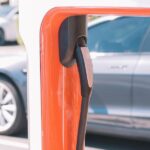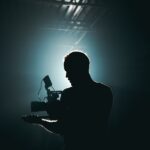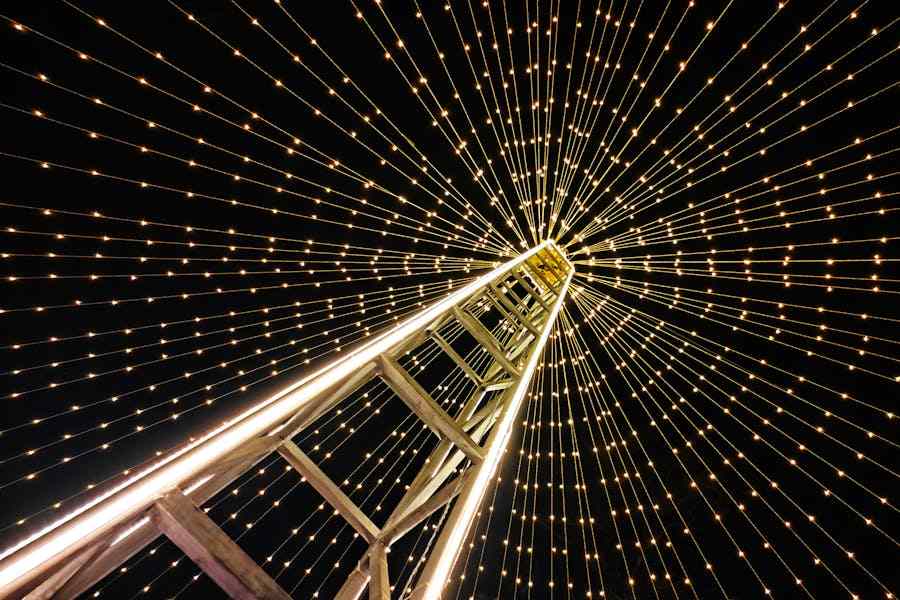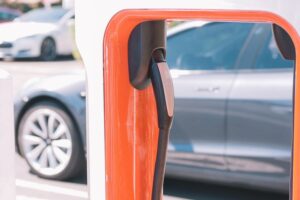The Northern Lights, or Aurora Borealis, are one of nature’s most spectacular displays, casting ethereal green, pink, and violet curtains across the night sky. While often associated with the icy expanses of Scandinavia and Canada, the United States also offers several prime locations for witnessing this celestial phenomenon. From the remote wilderness of Alaska to the serene landscapes of Michigan and Maine, various spots across the country provide a front-row seat to the lights. This article explores the best places in the USA to view the Northern Lights, detailing when and where you can enjoy this breathtaking natural wonder and tips to make your viewing experience as magical as the lights themselves.
Where to see northern lights in USA?
Due to their high latitudes and dark skies, some of the best places to see the Northern Lights are in Alaska, particularly around Fairbanks and Anchorage. In the lower 48 states, northern Minnesota’s Voyageurs National Park and Michigan’s Upper Peninsula, especially the Keweenaw Peninsula, offer good viewing opportunities. Maine’s Aroostook National Wildlife Refuge and Acadia National Park are great spots in the Northeast. For optimal viewing, aim for winter months when nights are the longest, and skies are the darkest.
Top Locations To View The Northern Lights In The USA
The Northern Lights, or Aurora Borealis, are a breathtaking natural spectacle best viewed from high-latitude regions. In the United States, several locations offer prime viewing opportunities, each with unique characteristics that enhance the experience:
Fairbanks, Alaska: Often regarded as one of the best places in the world to witness the Aurora Borealis, Fairbanks is ideally situated under the “Auroral Oval,” where aurora activity is concentrated. The long, dark winter nights from August to April provide ample opportunity to see the lights dance across the sky. Popular spots like the Murphy Dome offer a clear, unobstructed view of the horizon, making it a favorite among locals and visitors.
Anchorage, Alaska: While it offers fewer aurora viewing nights than Fairbanks, Anchorage still boasts many displays. The nearby Chugach State Park and areas like Flattop Mountain serve as excellent viewing platforms. These locations are easily accessible and provide a quick escape from city lights, enhancing the visibility of the auroras on clear nights.
Voyageurs National Park, Minnesota: This national park offers a unique aurora viewing experience in the lower 48 states. With its northern location and vast open skies free of light pollution, the park’s numerous water bodies reflect the auroras, creating a surreal double image that is both rare and captivating.
Boundary Waters Canoe Area Wilderness, Minnesota: For those seeking a more adventurous aurora viewing experience, this vast wilderness area offers one of the most remote settings in the United States. The lack of light pollution and the serene setting of the North Woods amplify the ethereal beauty of the Northern Lights, making for an unforgettable experience.
Keweenaw Peninsula, Michigan: Jutting out into Lake Superior, the Keweenaw Peninsula is one of the northernmost parts of the continental United States, providing excellent aurora viewing conditions. The peninsula’s geographic position minimizes light pollution and offers panoramic night sky views.
Isle Royale National Park, Michigan: This remote island in Lake Superior is only accessible by boat or seaplane, adding an element of adventure to the aurora viewing experience. Its location provides some of the darkest skies in the Midwest, ideal for observing the Northern Lights during their peak seasons in the spring and fall equinoxes.
Aroostook National Wildlife Refuge, Maine: Located in the northernmost part of Maine, this wildlife refuge is another secluded spot perfect for aurora viewing. The area’s dark skies and northern latitude increase the chances of seeing the Northern Lights during periods of high solar activity.
Acadia National Park, Maine: Although sightings in Acadia National Park are more sporadic when conditions are right, the park offers a dramatic backdrop for the lights with its rugged coastline and mountainous terrain. High geomagnetic activity can lead to stunning aurora displays here, particularly in the late fall and winter months.
Best Times To View The Northern Lights In The USA
Viewing the Northern Lights, or Aurora Borealis, in the USA requires timing your visit to maximize the chances of witnessing this spectacular natural phenomenon. The best times to view the Northern Lights are influenced by geographical location, time of year, and solar activity. Here’s a detailed guide to understanding the optimal conditions for aurora viewing across the United States:
Geographical Considerations:
Generally, the closer you are to the magnetic north, the more likely you will see the Northern Lights. Locations like Alaska provide nearly year-round opportunities due to their high latitude. For states in the lower 48, the chances increase the further north you go.
Time of Year:
The Northern Lights are a year-round phenomenon, but the best time to see them is during winter, from late September to early April. This is when the nights are the longest and darkest, providing a broader window in which the auroras can be visible. Darkness is crucial because it allows the colors and movements of the auroras to be seen more clearly against the night sky.
Solar Activity:
The Northern Lights are caused by particles from the sun striking Earth’s atmosphere. Solar activity follows an approximately 11-year cycle, with periods of maximum (solar maximum) and minimum (solar minimum) sunspot activity. The years surrounding the solar maximum are typically the best for seeing stronger and more frequent auroras. However, significant auroral displays can still occur during the quieter phases of the cycle, particularly during intense geomagnetic storms.
Weather Conditions:
Clear, cloudless skies are essential for viewing the Northern Lights. Overcast conditions can completely obscure the aurora, so it’s important to check the aurora and weather forecasts before planning a viewing trip.
Moon Phase:
The moon’s phase can also affect aurora viewing. A new moon or a small crescent moon provides the darkest skies, which can enhance the visibility of the auroras. A full moon, while beautiful, can brighten the sky and make fainter auroras harder to see.
Best Viewing Times:
The optimal time of night to view the Northern Lights is typically between 10 PM and 2 AM local time. This is when geomagnetic activity is often most vital, though auroras can occasionally be seen earlier or later at night.
Tips On Planning A Successful Viewing Trip
Planning a successful Northern Lights viewing trip requires careful consideration of several factors to ensure the best possible experience. Here are some essential tips to help you plan a compelling and memorable aurora-viewing adventure:
- Choose the Right Location: Research the best locations known for Northern Lights visibility, such as Fairbanks or Anchorage in Alaska or other northern states like Minnesota and Michigan. Consider both accessibility and historical aurora activity when selecting your destination.
- Timing Your Visit: Aim to travel during the winter months, from late September to early April, when nights are the longest and darkest. This maximizes your chances of seeing the Northern Lights. Also, plan around the new moon to minimize light pollution from the moon.
- Monitor Aurora and Weather Forecasts: Regularly check aurora forecasts to predict solar activity and the likelihood of seeing the Northern Lights. Websites like the NOAA Space Weather Prediction Center provide valuable insights. Also, monitor the local weather to ensure clear skies; cloud cover can obstruct your view of the aurora.
- Prepare for Cold Weather: Since the best viewing times are in colder months, dress warmly in layers. Include thermal underwear, a warm hat, gloves, and insulated boots. Consider bringing a thermos with a warm drink to help stay warm during long nights outside.
- Stay Flexible: The Northern Lights are unpredictable. Depending on the aurora and weather conditions, be prepared to stay late or venture out immediately. Consider staying for several days to increase your chances of a sighting.
- Consider Guided Tours: Guided tours can enhance your viewing experience, especially if you’re visiting areas like Alaska. Local guides know the best spots and times to see the Northern Lights and can provide additional equipment and transportation.
- Educate Yourself: Understanding what causes the Northern Lights can enrich your experience. Knowing a bit about solar activity, geomagnetic storms, and the science behind the auroras can make your trip more fascinating.
- Plan Other Activities: Since aurora sightings are not guaranteed, plan other daytime activities. These could include dog sledding, snowshoeing, or exploring local attractions to make your trip enjoyable regardless of aurora visibility.
Bottom Line
The bottom line for planning a successful Northern Lights viewing trip in the USA is to carefully select the right time and location, ensure clear, dark skies, and come prepared for the conditions. Key elements include traveling during the winter when nights are longest, checking solar activity and weather forecasts regularly, and dressing warmly. Equipping yourself with the right photography gear, staying flexible with your plans, and joining a guided tour can also significantly enhance your experience. Remember, while the Northern Lights are elusive and viewing them is never guaranteed, the adventure of chasing this magnificent natural phenomenon can be as rewarding as the sight itself.
FAQ’s
Do I need special equipment to see the Northern Lights?
No special equipment is needed to see the Northern Lights, but warm clothing is essential due to the cold night temperatures. If you plan to photograph the auroras, a good DSLR camera with manual mode, a tripod, and a wide-angle lens with a large aperture are recommended.
How can I predict when the Northern Lights will appear?
While precise predictions are challenging, you can use aurora forecast websites like the NOAA Space Weather Prediction Center or apps designed to alert you about increased geomagnetic activity. These tools can help you plan when and where to look for the Northern Lights.
Can the Northern Lights be seen anywhere else besides the locations mentioned?
While the locations listed offer the best chances in the USA, the Northern Lights can occasionally be seen farther south, especially during periods of intense solar activity. However, these occurrences are rare and less predictable.





















